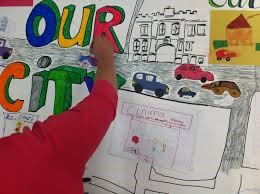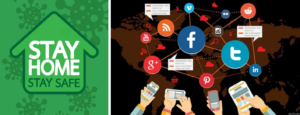
By Bianka Lang, SPPA trustee
April, 2020
 In terms of introduction, apart from being on the board of trustees at SPPA, I manage a team of eight frontline social workers in an assessment and intervention team. We work with young people, children and their families that are affected by concerns around domestic abuse, child sexual and criminal exploitation, neglect, emotional, physical or sexual abuse or homelessness.
In terms of introduction, apart from being on the board of trustees at SPPA, I manage a team of eight frontline social workers in an assessment and intervention team. We work with young people, children and their families that are affected by concerns around domestic abuse, child sexual and criminal exploitation, neglect, emotional, physical or sexual abuse or homelessness.
For the purpose of this blog, I want to share a piece of work that was inspired by the article Spatial approaches to social work – theoretical foundations and implications for practice and research by Professor Dr. Christian Spatscheck.
 The other day I had supervision with one of my newly qualified social workers and we were reflecting on a young person who is at risk of exploitation and says he can’t really go out in town, as he gets beaten up by different, sometimes random people. The social worker was trying to undertake some relationship based work with the young person to gain a better understanding of his lifeworld, and thus, had to think about a more creative way to do so. She had decided to drive around with the young person after our supervision to find out more about the areas he feels safe and unsafe in, so I told her about the article on spatial social work by Professor Dr. Christian Spatscheck and shared it with her. I suggested to the worker to print off a map of the town centre and to use it as a tool with the young person whilst being driven around, for example, to map out different areas and bring herself into it as well.
The other day I had supervision with one of my newly qualified social workers and we were reflecting on a young person who is at risk of exploitation and says he can’t really go out in town, as he gets beaten up by different, sometimes random people. The social worker was trying to undertake some relationship based work with the young person to gain a better understanding of his lifeworld, and thus, had to think about a more creative way to do so. She had decided to drive around with the young person after our supervision to find out more about the areas he feels safe and unsafe in, so I told her about the article on spatial social work by Professor Dr. Christian Spatscheck and shared it with her. I suggested to the worker to print off a map of the town centre and to use it as a tool with the young person whilst being driven around, for example, to map out different areas and bring herself into it as well.
It went really well! They used different colours and the young person enjoyed the direct work tool and fully engaged. Both really liked it and further direct work has grown from this session, such as mapping different schools and experiences, what social spaces would look like for the young person if he had a magic wand or if he was a town planner.
 After their session we reflected on how this tool had enabled us to gain a little more insight into the young person’s lifeworld and sharing some of the social worker’s views on spaces with the young person, thus building on trust and the relationship. We were curious about the young person’s daily planning routine when having to go to school for example in order to avoid ‘dangerous areas’ and questioned whether we should accept that this was happening daily. Should we accept this for anyone? This led to more open questions and the thought that a lot of young people we work with face similar dilemmas. Social spaces for young people appear to disappear more and more, such as accessible playing fields, youth clubs and community hubs. Where can they go and be young and adventurous? What opportunities do they have to grow up safely and develop into content and happy adults?
After their session we reflected on how this tool had enabled us to gain a little more insight into the young person’s lifeworld and sharing some of the social worker’s views on spaces with the young person, thus building on trust and the relationship. We were curious about the young person’s daily planning routine when having to go to school for example in order to avoid ‘dangerous areas’ and questioned whether we should accept that this was happening daily. Should we accept this for anyone? This led to more open questions and the thought that a lot of young people we work with face similar dilemmas. Social spaces for young people appear to disappear more and more, such as accessible playing fields, youth clubs and community hubs. Where can they go and be young and adventurous? What opportunities do they have to grow up safely and develop into content and happy adults?
And then came the virus…
 The virus came and took over everyday life. Everything changed. We have all moved into isolation or social distancing. Our cities now appear like ghost towns. Our social spaces have become digital spaces. For our young person that meant that he was safer, as he does not have to plan to avoid dangerous routes any longer
The virus came and took over everyday life. Everything changed. We have all moved into isolation or social distancing. Our cities now appear like ghost towns. Our social spaces have become digital spaces. For our young person that meant that he was safer, as he does not have to plan to avoid dangerous routes any longer
For social work and social pedagogy, in general, the ways of working have changed. We still undertake face-to-face visits whilst adhering to social distancing, but also undertake virtual check in’s, facetime calls, WhatsApp calls, Microsoft and zoom technology with families, young people and children.
Interestingly, young people appear to be ‘at home’ with the technology used and some open up more via
virtual chats, as this is their reality, their social space. We workers must adapt to this and gain an understanding of ourselves and learn from the young people in order to become as adept as them. The young people seem to like this; the roles have turned. Social pedagogy practice at first hand!
Here we have an opportunity: to learn from each other, alongside each other and with each other.
Although the lockdown is frightening, scary and isolating, I truly believe that we have opportunities to build a better future now, to think about developing social spaces for our families, young people and children after the isolation, to think about youth involvement to develop social spaces, to tackle exploitation and to make our cities safer for all of us.

#lockdownsocialpedagogy
